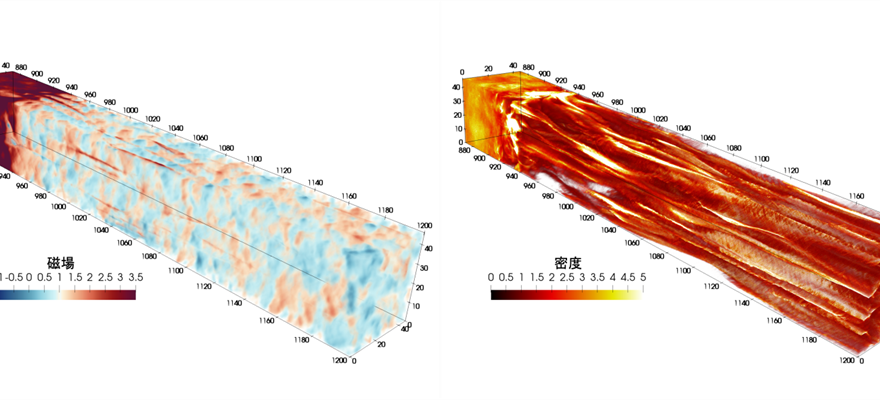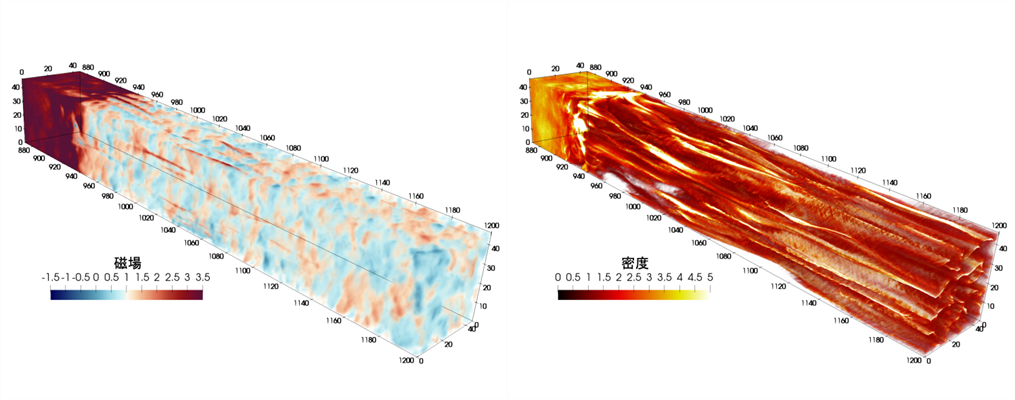[Press Release]
Successful Reproduction of High-Speed Radio Bursts by Fugaku
-The Origin of the Universe’s Largest Radio Explosion

Joint Press Release
Masahiro Hoshino (Professor, Department of Earth and Planetary Sciences )
Takanobu Amano, Associate Professor, Department of Earth and Planetary Science
A research group led by Masanori Iwamoto, Project Assistant Professor at the Institute for Fundamental Physics, Kyoto University, Yosuke Matsumoto, Associate Professor at the International Advanced Research Institute, Chiba University, Takanobu Amano, Associate Professor at the Graduate School of Science, University of Tokyo, Masahiro Hoshino, Professor at the Graduate School of Science and Engineering, Kyushu University, and Shuichi Matsukiyo, Professor at the Interdisciplinary Graduate School of Science and Engineering, Kyushu University, has successfully reproduced high-speed radio bursts using the supercomputer “Fugaku”.
A fast radio burst is the largest radio explosion in the universe, which suddenly shines in radio waves for a very short time. They are believed to originate from shock waves formed around neutron stars with extremely strong magnetic fields called magnetars, but until now there has been no theoretical support for this belief. The results of this very large-scale simulation of the shock wave by Fugaku have demonstrated for the first time that the radio waves in the simulation are consistent with previous observations and correctly reproduce fast radio bursts.
Since the radio signals of fast radio bursts contain information about the universe they pass through, it is thought that they can be used as a tool to explore the evolution and structure of the universe. To this end, it is important to understand where and how fast radio bursts are generated, and this research is expected to make great strides in this direction and to have a ripple effect on other fields such as cosmology.
The results of this research were published online in the U.S. international journal Physical Review Letters on January 16, 2024.

For more information, please refer to the following
Graduate School of Science web: https://www.s.u-tokyo.ac.jp/ja/press/10211/
Publication URL: https://journals.aps.org/prl/abstract/10.1103/PhysRevLett.132.035201

